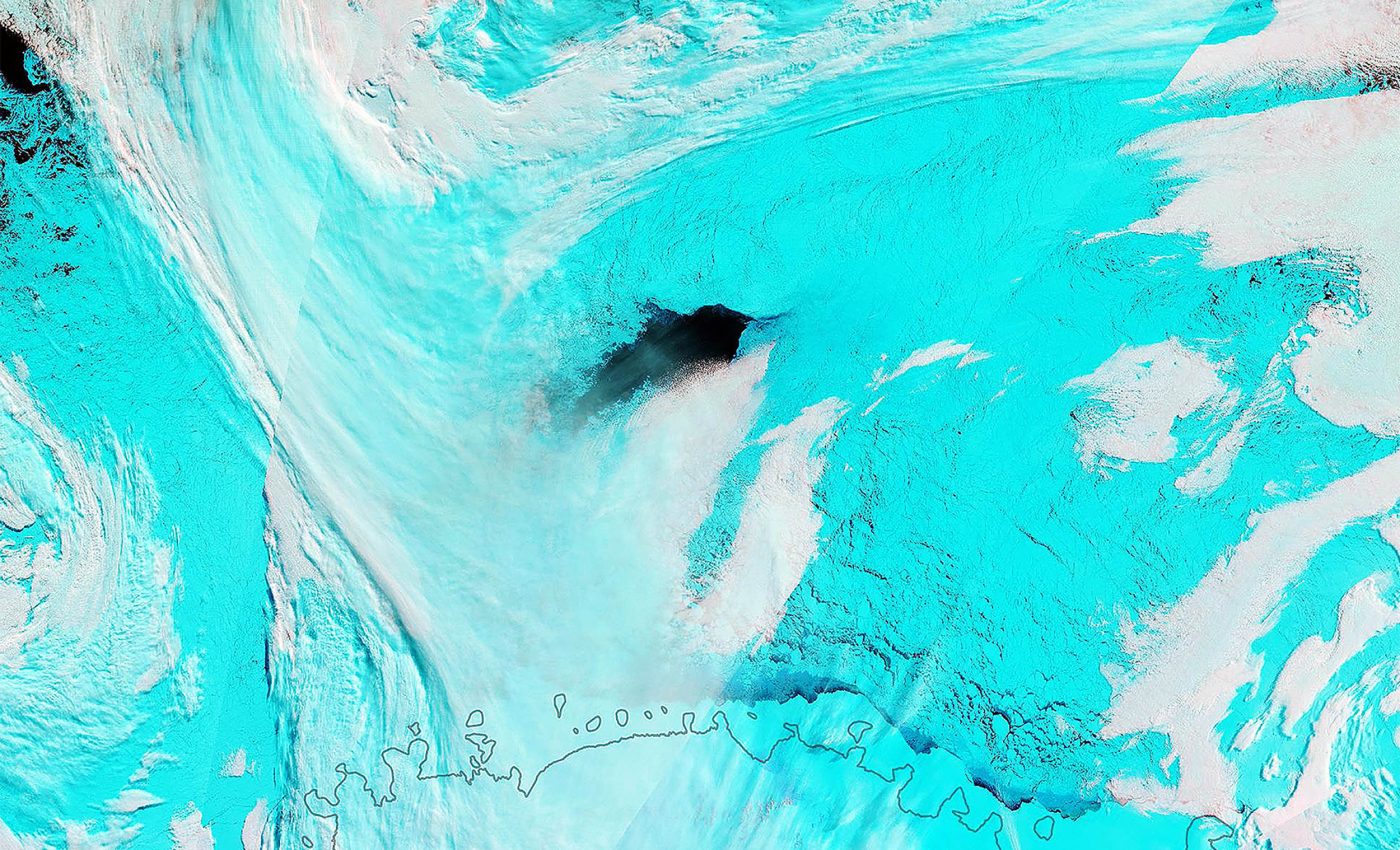
Enormous hole the size of Switzerland appeared in the Antarctica sea ice, now we know why
Antarctica’s winter sea ice usually forms a bright lid over millions of square miles. So when a massive, black patch was spotted by NASA scientists for the first time, satellite operators were taken aback, to say the least.
Then roughly a year later, the situation got even stranger. The gap, called a polynya, swelled to the size of Switzerland and stayed open for weeks.
Only after it refroze did researchers start piecing together how such an enormous opening in the ice could appear hundreds of miles from the nearest shoreline – right above a submerged plateau named Maud Rise.
Understanding polynyas – the basics
The Southern Ocean is normally a layer cake. A thin cap of cold, relatively fresh water floats over saltier, warmer layers, and that slight density difference keeps the column from churning.
A mid‑ocean polynya needs the cake to collapse. Salt must slip into the surface, make the top layer heavier, and flip the stack.
Once that happens, convection kicks in, the lid fractures, heat pours skyward, and the ocean “breathes” gases.
Coastal versions manage something similar each year because fierce winds shove ice away from land. Out on the high seas, though, the phenomenon is much less common.
Maud Rise, a 4,600‑foot‑tall seamount, may provide the missing ingredient by diverting currents and trapping water in tight spirals.
Stubborn patch over Maud Rise
History backs that hunch. Between 1974 and 1976, a much larger hole lingered over Maud Rise each winter.
The Maud Rise polynya was discovered in the 1970s, when remote‑sensing satellites capable of observing sea ice over the Southern Ocean were first launched.
It persisted through consecutive winters from 1974 to 1976, and oceanographers at the time assumed it would become an annual occurrence. But since the 1970s, it has occurred only sporadically and for brief intervals.

“2017 was the first time that we’ve had such a large and long‑lived polynya in the Weddell Sea since the 1970s,” said Aditya Narayanan of the University of Southampton, lead author of the study in Science Advances.
He joined colleagues to probe the comeback with robotic floats, tagged elephant seals, and a high‑resolution ocean model.
Salt, storms, and a hidden conveyor
During those winters, the clockwise Weddell Gyre sped up. That spin drew a deep layer of warm, salty water nearer the surface, softening ice from below. Yet the meltwater should have freshened the lid and shut down mixing.
“This upwelling helps to explain how the sea ice might melt. But as sea ice melts this leads to a freshening of the surface water, which should in turn put a stop to the mixing,” explained Fabien Roquet, a Professor in Physical Oceanography at the University of Gothenburg and co-author of the research.
“So, another process must be happening for the polynya to persist. There must be an additional input of salt from somewhere.”
Roaring extratropical storms supplied part of that punch. Their swirling winds flung sea ice outward and dragged briny water toward Maud Rise.
Atmospheric rivers – plumes of moist air stretching a thousand miles – added warmth from above, helping strip away stratification.
“Ekman transport” as the missing shove
A final push came from physics first described a century ago. When wind blows across the ocean, Earth’s rotation deflects the surface flow roughly 90 degrees, a process called Ekman transport.
The model showed this flow steering salt‑laden water onto the northern flank of Maud Rise, exactly where the 2017 hole opened.
“Ekman transport was the essential missing ingredient that was necessary to increase the balance of salt and sustain the mixing of salt and heat towards the surface water,” said co‑author Alberto Naveira Garabato, also from the University of Southampton.
The storms didn’t just move ice; they herded the right water into the right spot, letting convection roar. By late September, the opening had vented more than twenty times the heat that normally seeps through unbroken ice before finally freezing again.
Polynyas have a global impact
A hole in the Southern Ocean sea ice may look local, yet its fingerprints show up far away.
“The imprint of polynyas can remain in the water for multiple years after they’ve formed,” noted Professor Sarah Gille from University of California San Diego (UCSD), another co-author of the research
“They can change how water moves around and how currents carry heat toward the continent. The dense waters that form here can spread across the global ocean.”
Deep convection hauls carbon‑rich water upward, where it can release CO₂, and sends newly formed, oxygen‑rich brine sliding along the seafloor.
What happens next?
That heavy brine eventually feeds the global conveyor belt of currents that helps regulate climate. Because the Maud Rise mechanism hinges on a stronger gyre and stormier skies, its future frequency could ride on winds already shifting as the planet warms.
“For the first time since observations began in the 1970s, there’s a negative trend in sea ice in the Southern Ocean, which began around 2016. Before then, it had remained somewhat stable,” Professor Gille concluded.
The same rise of warm, salty water that primed the 2017 hole now seems to be thinning ice across Antarctica’s fringe.
Scientists will watch the next few winters closely. Whether the polynya returns or not, its story shows that the frozen edge of the world can still spring surprises – and that what happens far south seldom stays there, for the wider planet.
The full study was published in the journal Science Advances.
—–
Like what you read? Subscribe to our newsletter for engaging articles, exclusive content, and the latest updates.
Check us out on EarthSnap, a free app brought to you by Eric Ralls and Earth.com.
—–













